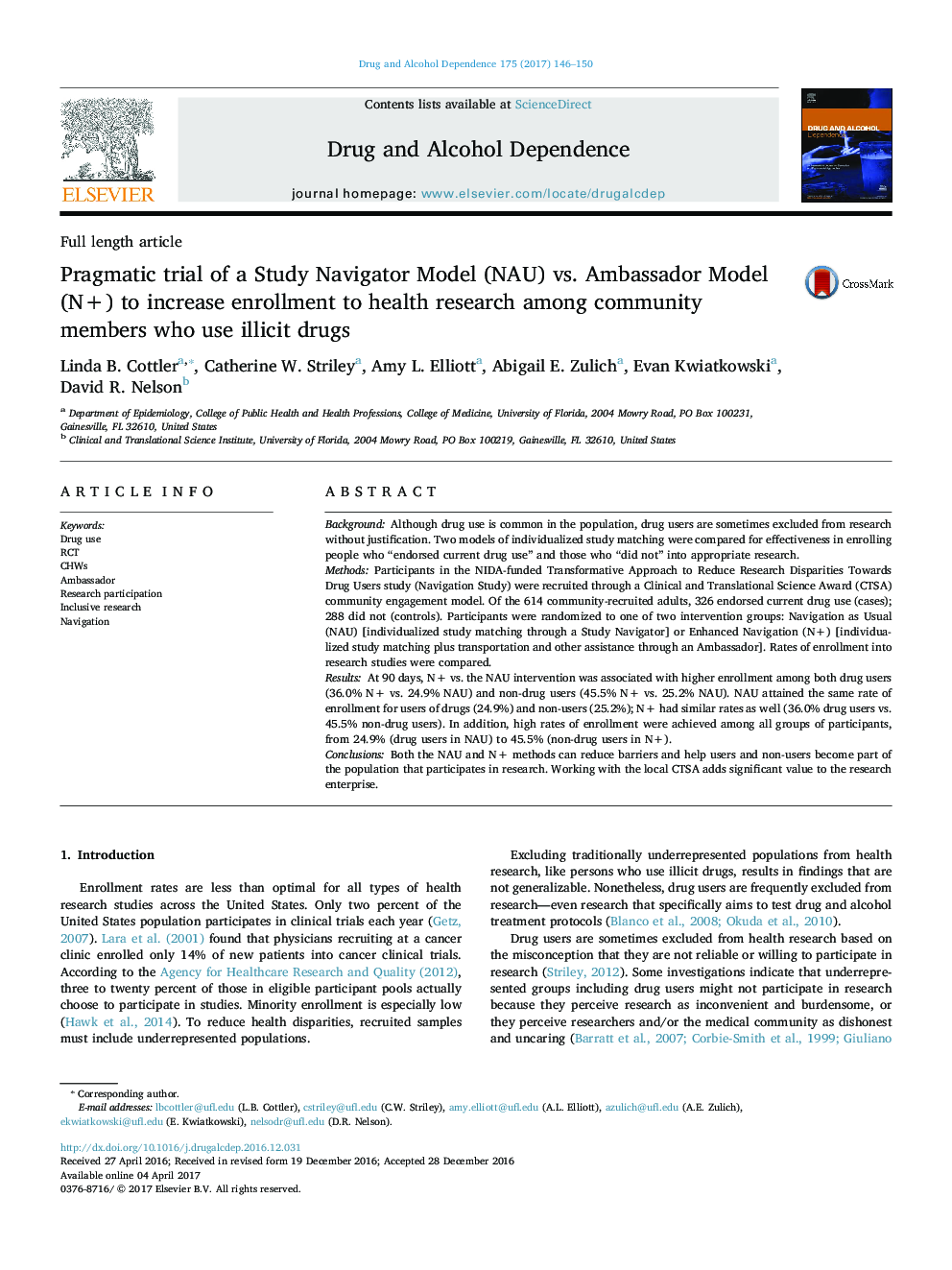| کد مقاله | کد نشریه | سال انتشار | مقاله انگلیسی | نسخه تمام متن |
|---|---|---|---|---|
| 5120078 | 1486116 | 2017 | 5 صفحه PDF | دانلود رایگان |

- The N+ group attained higher enrollment compared to the Navigation as Usual (NAU) group for both drug users and non-users.
- In both randomization groups, drug users and non-users attained similar rates of enrollment.
- Of note are the high rates of enrollment in research among all participants (from 24.9% to 45.5%).
- Both methods can help users and non-users participate in health research.
BackgroundAlthough drug use is common in the population, drug users are sometimes excluded from research without justification. Two models of individualized study matching were compared for effectiveness in enrolling people who “endorsed current drug use” and those who “did not” into appropriate research.MethodsParticipants in the NIDA-funded Transformative Approach to Reduce Research Disparities Towards Drug Users study (Navigation Study) were recruited through a Clinical and Translational Science Award (CTSA) community engagement model. Of the 614 community-recruited adults, 326 endorsed current drug use (cases); 288 did not (controls). Participants were randomized to one of two intervention groups: Navigation as Usual (NAU) [individualized study matching through a Study Navigator] or Enhanced Navigation (N+) [individualized study matching plus transportation and other assistance through an Ambassador]. Rates of enrollment into research studies were compared.ResultsAt 90 days, N+ vs. the NAU intervention was associated with higher enrollment among both drug users (36.0% N+ vs. 24.9% NAU) and non-drug users (45.5% N+ vs. 25.2% NAU). NAU attained the same rate of enrollment for users of drugs (24.9%) and non-users (25.2%); N+ had similar rates as well (36.0% drug users vs. 45.5% non-drug users). In addition, high rates of enrollment were achieved among all groups of participants, from 24.9% (drug users in NAU) to 45.5% (non-drug users in N+).ConclusionsBoth the NAU and N+ methods can reduce barriers and help users and non-users become part of the population that participates in research. Working with the local CTSA adds significant value to the research enterprise.
Journal: Drug and Alcohol Dependence - Volume 175, 1 June 2017, Pages 146-150